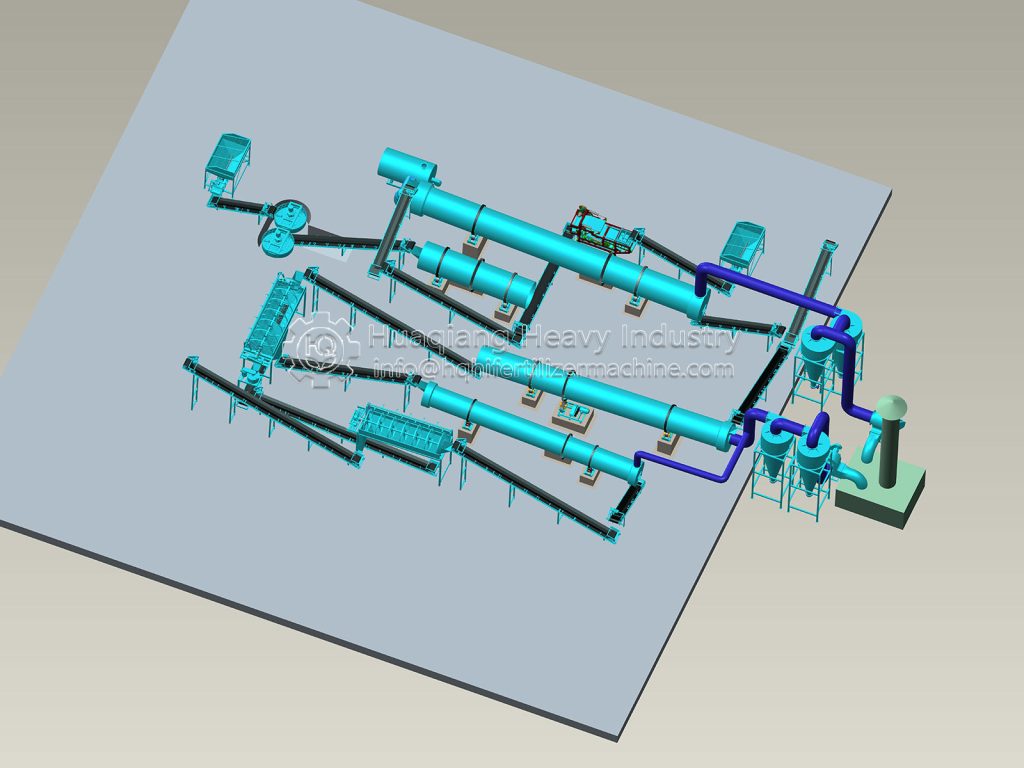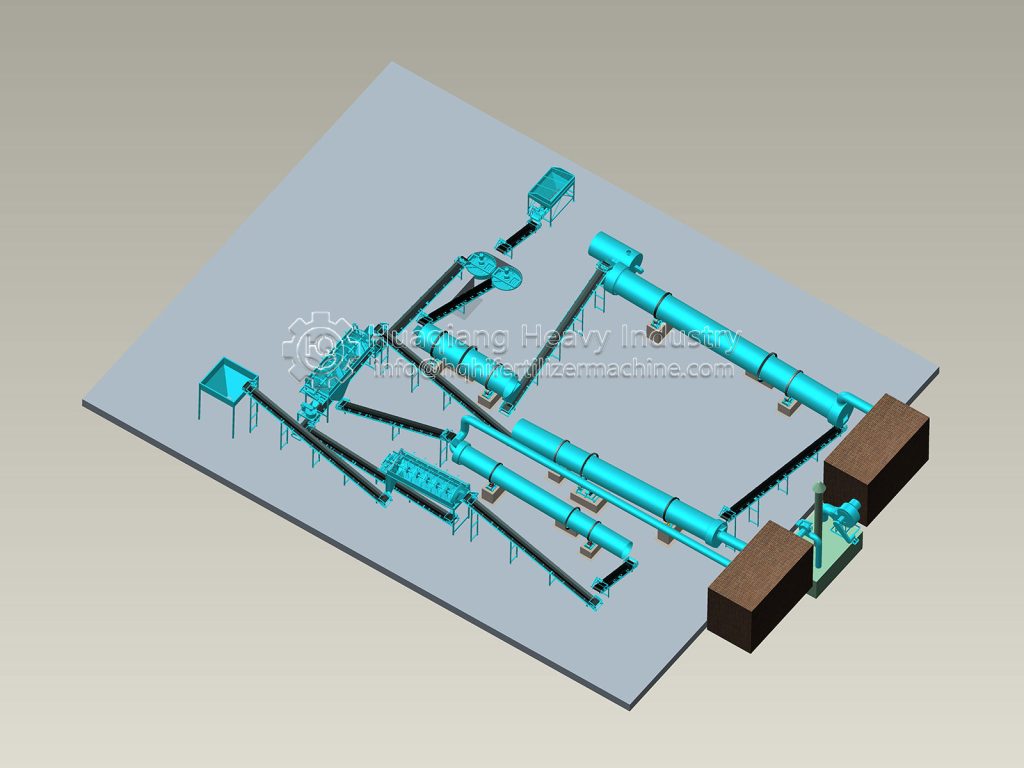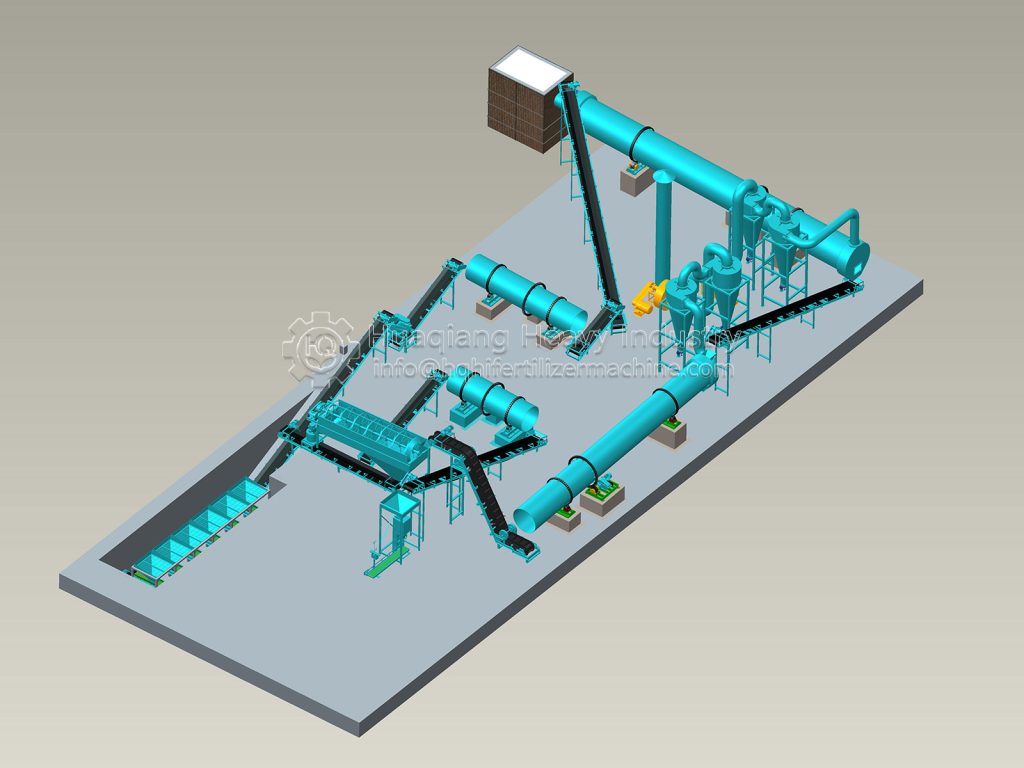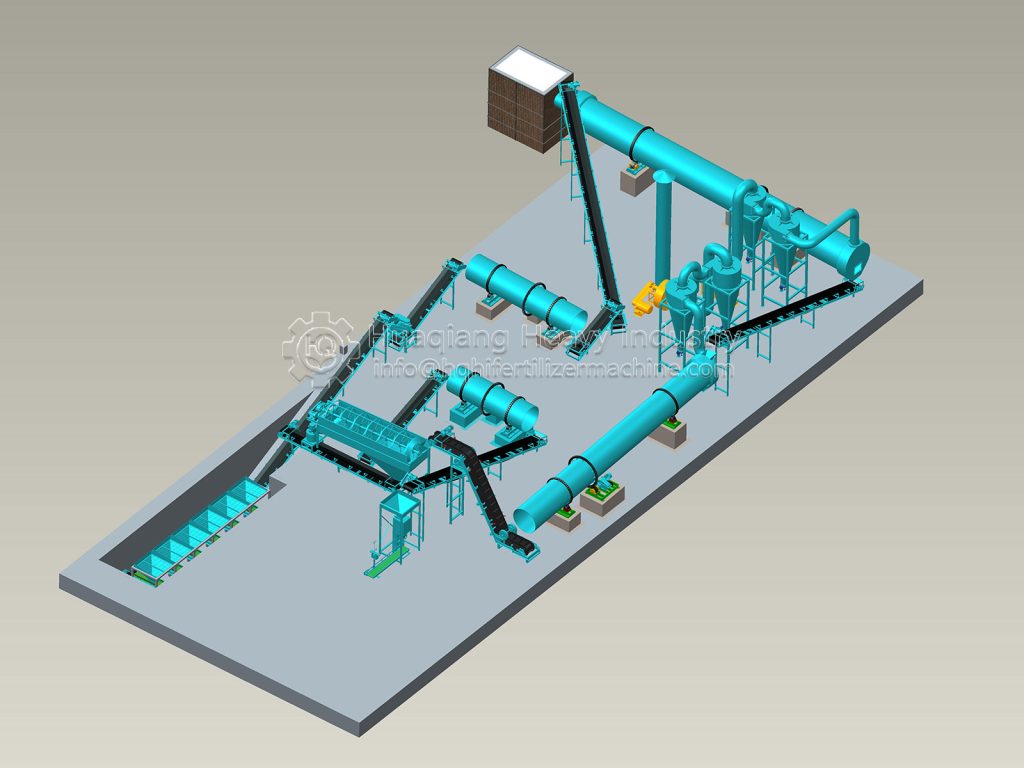Converting elemental nitrogen, phosphorus, and potassium raw materials into granular fertilizer requires scientific proportioning, physical shaping, and precise control to achieve balanced nutrients and convenient application. This npk fertilizer production line not only improves fertilizer utilization but also addresses the challenges of bulk raw materials, such as clumping and transportation difficulties.
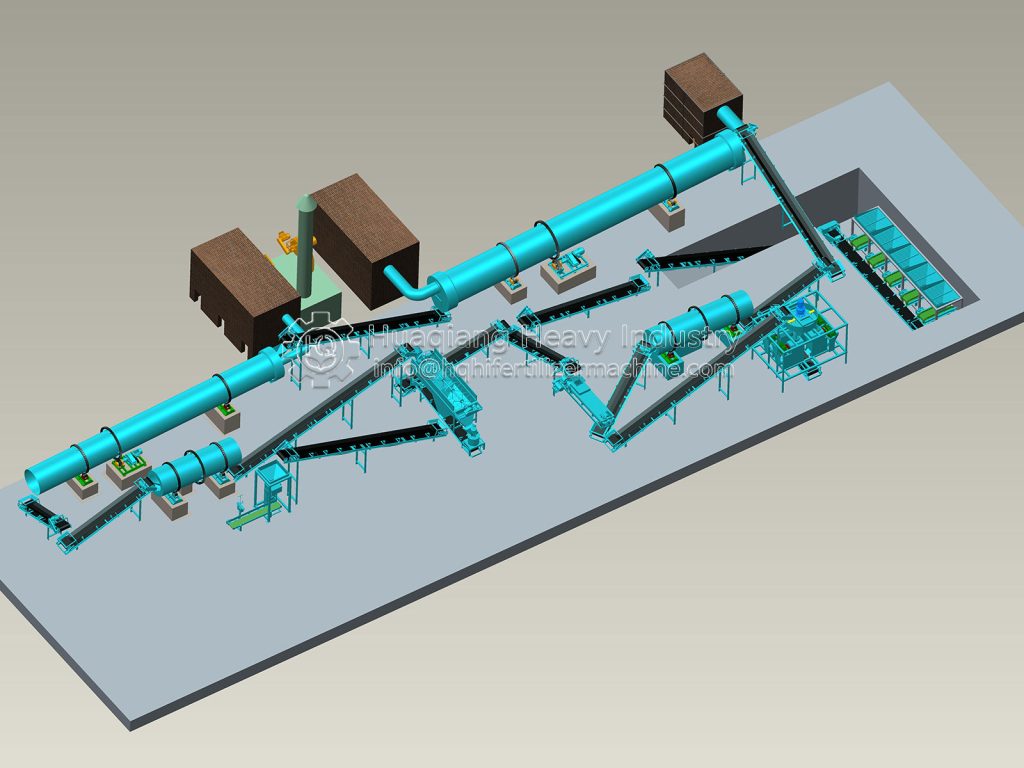
The first step is raw material pretreatment and proportioning. Nitrogen sources (such as urea and ammonium chloride), phosphorus sources (superphosphate and diammonium phosphate), and potassium sources (potassium chloride and potassium sulfate) must be crushed to a fineness of 80-100 mesh to ensure uniform mixing. The nitrogen, phosphorus, and potassium ratios are precisely adjusted based on the needs of the target crop. For example, the 15-15-15 general formula commonly used for field crops requires strict control of the tolerance of each raw material within ±0.5%. 5%-8% bentonite is added as a binder to enhance granularity.
The core granulation process often utilizes a rotary drum granulation process. The mixed raw materials are fed into a rotary drum granulator, where a 30%-40% solution of warm water or dilute phosphoric acid is sprayed through a spray device to form “mother balls” within the drum. The drum speed is controlled at 20-25 rpm, and the inclination angle is maintained at 3°-5°. This ensures that the mother balls continuously absorb the raw material powder as they rotate, gradually growing into uniform granules with a diameter of 2-4mm. For the production of high-concentration granular fertilizers, an extrusion granulation process is used. A twin-screw extruder presses the material into a cylindrical shape, which is then sheared into granules by a pelletizer. This is suitable for formulas with low moisture content.
After granulation, the granules undergo drying and cooling. The temperature in the drum fertilizer dryer is controlled at 120-150°C to reduce the moisture content of the granules to below 10% to prevent clumping during storage. The granules then enter a drum fertilizer cooler, where low-temperature air is used to cool them to room temperature to prevent condensation during subsequent packaging. Finally, unqualified granules (overly coarse or fine) are separated by a screening machine and returned to the granulator for reprocessing. The finished product is then sprayed with an anti-caking agent in a coating machine to improve storage stability.
Throughout the entire production process, indicators such as granule strength (should be ≥20N) and disintegration (disintegrates in water within 30 minutes) are monitored in real time to ensure product compliance with national standards. This process transforms nitrogen, phosphorus, and potassium raw materials from bulk to granules, facilitating mechanized fertilization while reducing nutrient loss, providing strong support for improving agricultural quality and efficiency.
